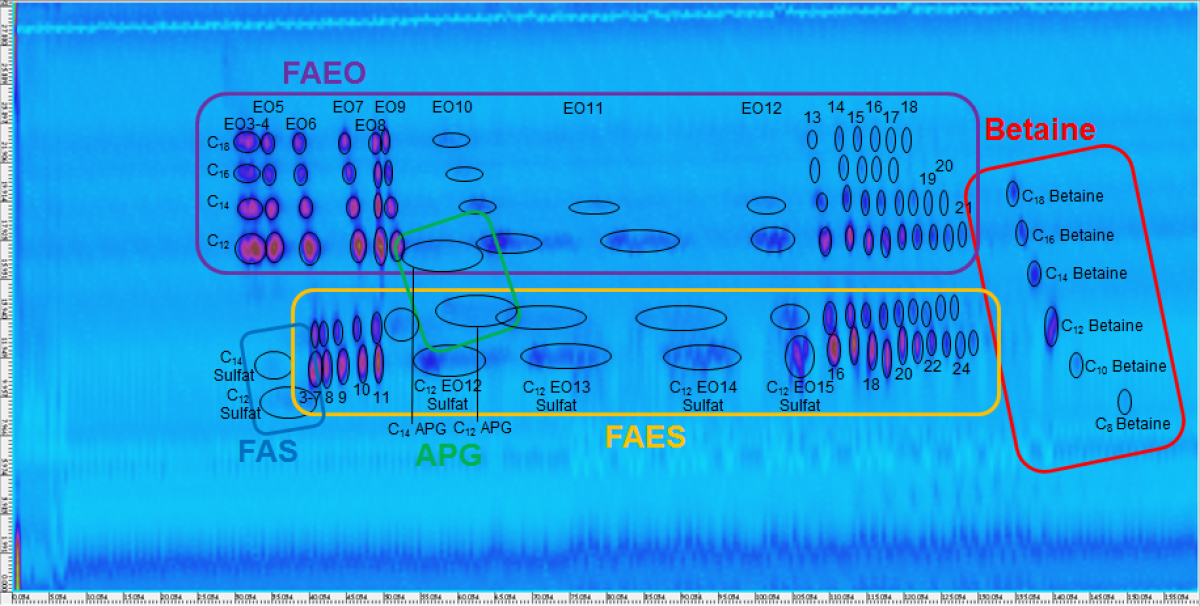Product Analysis
Every product is designed in a particular way - product analysis enables us to understand the important materials, processing, economic and aesthetic decisions which are required before any product can be manufactured.
Everyday we use hundreds of different products, such as shampoos, cleaners, cosmetics or drugs. But have you ever thought about the way they are made?
We are interested in the analysis of all components which are used in a product, especially in cleaners.
Fatty alcohol derivatives are used as surfactants and applied in commercial formulations (e.g. laundry detergents, cleaning agents, cosmetics) as complex mixtures because each surfactant has its own functions such as cleaning, wetting, foaming, emulsifying, dispersing, etc.
In general, surfactants can be divided into four groups concerning their polar headgroup: anionic, non-ionic, cationic and amphoteric surfactants.
In addition, one surfactant can consist of a number of alkyl and ethoxylate homologues because of the way of production. In the industrial process for example the anionic aliphatic ether sulfates (AES) are synthesized by the addition of ethylene oxides to a mixture of aliphatic alcohols of oleochemical or petrochemical origin in a base-catalyzed reaction and are then sulphated. This leads to the general formula CnH2n+1(OC2H4)xSO4−, where n is in the range of 8–18 and x varies from 1 to 30 or more.
Thus, the separation and identification of surfactants in commercial formulations can be challenging due to the diversity of fatty alcohol derivatives and the complexity of the sample matrix. Therefore, efficient analytical methods are required for product control. High-performance liquid chromatography (HPLC) is one of the preferred techniques because it both characterizes surfactants according to their composition and quantifies individual surfactants in a complex mixture. However, with reversed-phase (RP) chromatography, easily a separation by alkyl chain length can be achieved, whereas normal-phase (NP) chromatography leads often to a separation by the degree of ethoxylation (EO number). In addition, oligomers can be separated with HPLC also at the critical point of adsorption (CAP). In this case the retention is independent on molar mass for non-functional and monofunctional chains, while for individual oligomers of difunctional chains, a separation according to molar mass is possible. For the separation of diblock copolymers, as it is the case for ethoxylated fatty alcohol derivatives, one block, the alkyl chain, may be separated by liquid adsorption chromatography (LAC) and the other block according to the number of EO by size exclusion chromatography (SEC). This mechanism is called liquid exclusion–adsorption chromatography (LEAC). In contrast to HPLC, gas chromatography can also be used but derivatization is always needed.
We are interested:
- in the analysis of industrial polymers
- in the analysis of inpurities of industrial products


